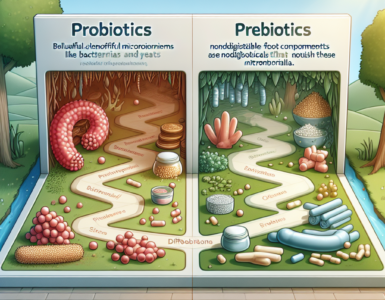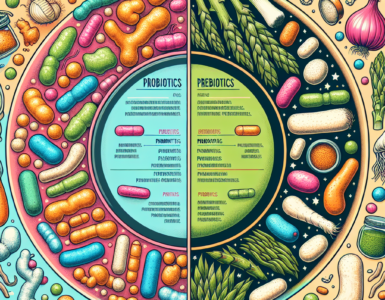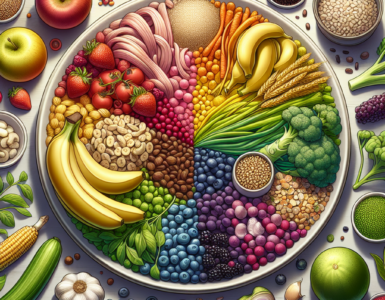Introduction to Low-Sugar Eating
Embarking on a low-sugar eating plan can significantly impact one’s overall health, especially for those who lead a physically active lifestyle. This section delves into the importance of managing blood sugar levels and the advantages that foods with a low glycemic index offer to active individuals.
The Importance of Blood Sugar Management
Maintaining stable blood sugar levels is crucial for optimal body function. Fluctuations in blood sugar can lead to energy spikes and crashes, affecting mood, focus, and physical performance. For athletes and fitness enthusiasts, consistent blood sugar levels ensure sustained energy for workouts and aid in recovery.
The table below illustrates the potential risks associated with poor blood sugar management:
| Blood Sugar Level | Potential Risk |
|---|---|
| High | Energy crashes, increased fat storage, elevated risk of type 2 diabetes |
| Low | Fatigue, impaired concentration, decreased performance |
Benefits of Low Glycemic Index Foods for Active Individuals
Foods with a low glycemic index (GI) are digested and absorbed more slowly, leading to a gradual rise in blood sugar and insulin levels. Incorporating these foods into one’s diet can enhance endurance, promote satiety, and support weight management—a critical aspect for active lifestyles.
Active individuals may experience the following benefits from low GI foods:
- Sustained Energy: Low GI foods provide a slower, more consistent release of energy, which is ideal for enduring physical activities.
- Improved Weight Control: These foods can help control appetite and delay hunger signals, aiding in weight management efforts.
- Enhanced Exercise Recovery: A steady blood sugar level aids in muscle recovery and replenishment of energy stores post-exercise.
Utilizing low sugar meal ideas can be transformative for those seeking to optimize their health and athletic performance. By embracing low-sugar eating habits, individuals can manage their blood sugar levels effectively and harness the benefits of a diet rich in low-glycemic foods.
Fundamentals of Low-Sugar Meal Planning
Creating a meal plan with a focus on low sugar intake is an essential component of managing blood sugar levels, particularly for those leading an active lifestyle. A low-sugar meal is pivotal for maintaining energy, avoiding blood sugar spikes, and supporting overall health.
What Constitutes a Low-Sugar Meal?
A low-sugar meal is one that limits simple carbohydrates and sugars, both natural and added, to minimize the impact on blood sugar levels. These meals emphasize ingredients with a low glycemic index (GI), which are digested more slowly, providing a steady release of energy.
Key components of a low-sugar meal include:
- An abundance of non-starchy vegetables
- Moderate portions of lean proteins
- Healthy fats
- High-fiber foods
- Whole grains in moderation
It’s also essential to be aware of hidden sugars in sauces, dressings, and packaged foods. Reading nutritional labels is a must to ensure that meals are truly low in sugar content.
| Food Group | Examples | Notes |
|---|---|---|
| Non-starchy Vegetables | Broccoli, Spinach, Bell Peppers | High in nutrients, low in sugars |
| Lean Proteins | Chicken Breast, Lentils, Tofu | Support muscle repair and growth |
| Healthy Fats | Avocado, Nuts, Olive Oil | Help with satiety and nutrient absorption |
| High-fiber Foods | Beans, Berries, Chia Seeds | Aid in digestion and blood sugar stabilization |
| Whole Grains | Quinoa, Brown Rice, Oats | Provide energy without a sugar spike |
Balancing Macronutrients
Balancing macronutrients is crucial for a well-rounded low-sugar meal plan. This balance helps sustain energy levels, supports metabolic functions, and aids in muscle recovery for individuals with active lifestyles. Optimal macronutrient distribution can vary depending on individual goals and activities, but a general guideline is as follows:
| Macronutrient | Percentage of Daily Intake |
|---|---|
| Carbohydrates | 45-65% |
| Proteins | 10-35% |
| Fats | 20-35% |
When planning meals, it’s important to select carbohydrates with a low GI, pair them with proteins and fats to further stabilize blood sugar, and ensure fiber is a component of the carbohydrate source. This approach to meal planning not only supports blood sugar management but also contributes to overall nutrient intake and health.
Breakfast Ideas to Kickstart Your Day
Starting the day with the right meal can have a significant impact on one’s energy levels and blood sugar management, especially for those leading an active lifestyle. Breakfast options that are rich in protein and low in sugar are essential for maintaining steady energy throughout the morning.
Protein-Rich Breakfasts Without the Sugar Rush
Protein is a key macronutrient that helps to repair and build tissues, making it particularly important for individuals who exercise regularly. A morning meal high in protein can provide satiety without the sugar rush that typically comes from high-carbohydrate or sugary breakfasts. Here are some protein-focused breakfast ideas that are low in sugar:
- Scrambled eggs with spinach and mushrooms
- Greek yogurt topped with nuts and seeds
- Smoked salmon on a bed of mixed greens
- Cottage cheese with sliced tomatoes and avocado
- Omelette filled with your choice of vegetables
| Protein Source | Grams of Protein |
|---|---|
| Scrambled Eggs (2 eggs) | 12 – 14g |
| Greek Yogurt (1 cup) | 20 – 22g |
| Smoked Salmon (100g) | 20 – 25g |
| Cottage Cheese (1 cup) | 25 – 28g |
| Vegetable Omelette (2 eggs) | 14 – 16g |
Incorporating Whole Grains and Fiber
For those looking to include carbohydrates in their breakfast, choosing whole grains that are low on the glycemic index can provide energy without causing a spike in blood sugar levels. Fiber from whole grains also aids in digestion and prolongs the feeling of fullness. Examples of whole grain and high-fiber breakfast options include:
- Rolled oats with a sprinkle of cinnamon and chia seeds
- Quinoa porridge with a dash of nutmeg and sliced almonds
- Whole grain toast with mashed avocado and a sprinkle of flaxseeds
- Buckwheat pancakes topped with fresh berries
- Barley cereal with milk and crushed walnuts
| Whole Grain | Fiber Content |
|---|---|
| Rolled Oats (1 cup cooked) | 4 – 5g |
| Quinoa (1 cup cooked) | 5g |
| Whole Grain Toast (1 slice) | 2 – 3g |
| Buckwheat Pancakes (2 pancakes) | 3 – 4g |
| Barley (1 cup cooked) | 6g |
Combining protein and fiber in the morning meal can create a balanced, nourishing start to the day, providing the necessary energy for those with active routines while assisting in blood sugar management. These low sugar meal ideas are designed to support a healthy and dynamic lifestyle.
Energizing Lunches for Sustained Activity
Lunches packed with the right nutrients can provide the energy needed for sustained physical activity without the negative effects of high sugar intake. Opting for meals with lean proteins and low-GI vegetables or creative salads enriched with healthy fats can be both satiating and beneficial for blood sugar management.
Lean Proteins and Low-GI Vegetables
Lean proteins, such as chicken breast, turkey, and fish, offer essential amino acids without excessive sugars, contributing to muscle repair and growth. Pairing these proteins with low-GI vegetables ensures a slower release of glucose into the bloodstream, providing a steady energy source.
| Lean Protein | GI Value |
|---|---|
| Grilled Chicken Breast | Low |
| Baked Turkey | Low |
| Grilled Salmon | Low |
Complementing these proteins with an array of colorful, fiber-rich vegetables like spinach, broccoli, and bell peppers not only adds nutritional value but also keeps the overall glycemic index of the meal low.
| Vegetable | GI Value |
|---|---|
| Spinach | Low |
| Broccoli | Low |
| Bell Peppers | Low |
Creative Salads with Healthy Fats
Salads need not be bland. Infusing them with a variety of textures and flavors from ingredients rich in healthy fats like avocado, nuts, and seeds can transform them into a fulfilling meal. These fats are not only good for heart health but also help in sustaining energy levels.
| Healthy Fat Source | GI Value |
|---|---|
| Avocado | Low |
| Almonds | Low |
| Sunflower Seeds | Low |
A dressing made with olive oil and vinegar or lemon juice adds zest to the salad without adding sugars. For a touch of natural sweetness, consider tossing in a handful of low-GI fruits such as berries or apple slices.
| Low-GI Fruit | GI Value |
|---|---|
| Strawberries | Low |
| Apple Slices | Low |
Combining these elements results in a meal that supports an active lifestyle by providing the necessary fuel in a balanced and delicious way. These low sugar meal ideas not only cater to taste buds but also align with nutritional goals, especially for those monitoring their blood sugar levels.
Dinner Options for Recovery and Growth
For individuals maintaining an active lifestyle, dinner is an essential meal that aids in recovery and growth. Crafting low sugar meal ideas for dinner involves a balance of complex carbohydrates and proteins, as well as incorporating a variety of vegetable-based dishes.
Balancing Complex Carbs with Proteins
The equilibrium of complex carbohydrates and proteins in a meal is key to post-activity recovery and muscle growth. Complex carbohydrates are essential for replenishing glycogen stores, while proteins are crucial for repairing and building muscle tissue.
| Complex Carbohydrates | Proteins |
|---|---|
| Quinoa | Grilled Chicken Breast |
| Sweet Potatoes | Baked Salmon |
| Brown Rice | Tofu |
| Whole Wheat Pasta | Black Beans |
A sample dinner could include a serving of brown rice or quinoa coupled with a lean protein such as grilled chicken or baked salmon. This combination provides a sustained energy release and the essential amino acids needed for muscle repair.
Versatile Vegetable-Based Dishes
Vegetable-based dishes can be both nourishing and creative, serving as a canvas for a range of flavors and textures. They provide essential vitamins, minerals, and fiber, which are important for overall health and maintaining a balanced diet.
| Vegetable Dish | Key Ingredients |
|---|---|
| Stir-Fried Mixed Vegetables | Broccoli, Bell Peppers, Carrots, Snap Peas |
| Roasted Vegetable Medley | Zucchini, Eggplant, Tomatoes, Onions |
| Stuffed Bell Peppers | Quinoa, Spinach, Mushrooms, Garlic |
| Vegetable Curry | Cauliflower, Chickpeas, Spinach, Coconut Milk |
For instance, a colorful vegetable stir-fry with a mix of broccoli, bell peppers, carrots, and snap peas can provide a high volume of food with low caloric density. Alternatively, a hearty vegetable curry with cauliflower and chickpeas offers both complexity in taste and nutritional benefits.
These dinner options focus on whole, unprocessed foods that are low in sugars and high in nutrients, supporting an active lifestyle by optimizing recovery and promoting muscle growth. By choosing low glycemic index foods and properly balancing macronutrients, individuals can ensure their meals are conducive to their fitness goals and overall well-being.
Snacks and Mini-Meals for Energy Boosts
Smart snacking is a cornerstone of maintaining steady energy levels, especially for those with an active lifestyle. Snacks and mini-meals that are rich in nutrients and low in sugar can provide an energy boost without the subsequent crash that often follows high-sugar options.
Nut and Seed Snack Ideas
Nuts and seeds offer a powerful package of proteins, healthy fats, and fiber. They help stabilize blood sugar levels and provide sustained energy. A handful of these can be a perfect pick-me-up during the day.
| Nuts and Seeds | Protein (g per oz) | Fiber (g per oz) | Notes |
|---|---|---|---|
| Almonds | 6 | 3.5 | Rich in Vitamin E |
| Walnuts | 4 | 2 | High in Omega-3 |
| Pumpkin Seeds | 7 | 1.7 | Magnesium-rich |
| Chia Seeds | 4.7 | 10.6 | High in Omega-3 |
Fruit Pairings for a Sweet Yet Low-Sugar Treat
Fruit can satisfy a sweet tooth while providing vitamins, minerals, and fiber. Pairing fruits with low glycemic index values with a protein source can keep sugar intake in check and energy levels consistent.
| Fruit | GI Range | Suggested Pairings |
|---|---|---|
| Apple | Low | Almond butter |
| Berry Mix (strawberries, blueberries, raspberries) | Low | Greek yogurt |
| Pear | Low-Medium | Cottage cheese |
| Orange | Medium | Walnuts |
Mixing these fruits with nuts or seeds, or incorporating them into a small serving of dairy or plant-based proteins, can yield a delicious and nutritious snack that fuels your activities without adding excessive sugar to your diet. Opt for whole fruits over fruit juices to maximize fiber content and minimize sugar spikes.
Hydration and Low-Sugar Beverages
Maintaining proper hydration is a fundamental aspect of fueling an active lifestyle. However, many popular beverages come with a high sugar content, which can be detrimental to blood sugar management. It’s crucial for active individuals to understand how to stay hydrated while minimizing sugar intake.
Sugar-Free Hydration Options
When considering sugar-free hydration options, water is the exemplary choice. It provides hydration without any added sugars or calories. However, those looking for a bit more flavor have several alternatives that offer hydration without compromising their low-sugar goals.
| Beverage | Sugar Content | Calories |
|---|---|---|
| Water | 0g | 0 |
| Herbal Tea (unsweetened) | 0g | 0 – 2 |
| Black Coffee (unsweetened) | 0g | 2 – 5 |
| Sparkling Water (unsweetened) | 0g | 0 |
| Vegetable Juice (unsweetened) | Varies (low) | Varies (low) |
For individuals who find plain water unappealing, infusing water with slices of fruits or herbs can add flavor without a significant increase in sugar content. Another option is to drink herbal teas or unsweetened coffee, which can provide a comforting or energizing alternative while still being sugar-free.
Understanding the Role of Drinks in Sugar Intake
Beverages can play a deceptively large role in daily sugar consumption. Many drinks, such as sodas, fruit juices, and energy drinks, contain high levels of added sugars that can lead to spikes in blood sugar levels. Active individuals must be aware of the sugar content in their beverages to maintain stable energy levels and overall health.
| Beverage Type | Average Sugar Content |
|---|---|
| Soda (12 oz) | 39g |
| Fruit Juice (1 cup) | 20 – 30g |
| Energy Drink (8 oz) | 25 – 30g |
| Sports Drink (8 oz) | 14 – 17g |
By choosing sugar-free or low-sugar beverages, individuals can significantly reduce their overall sugar intake. It’s essential to read labels carefully, as many products marketed as “healthy” or “natural” can still contain high amounts of sugar. Staying informed and making conscious choices can help individuals maintain their low-sugar meal plans while adequately hydrating their bodies.
Making Low-Sugar Eating a Lifestyle
Adopting a low-sugar eating habit is not just a dietary change but a lifestyle adjustment that can lead to improved health and better athletic performance. These tips and strategies are geared towards individuals who are dedicated to maintaining an active lifestyle while managing their sugar intake.
Tips for Sustainable Low-Sugar Eating Habits
- Stock Up on Low-GI Ingredients: Fill your pantry with staples that have a low glycemic index. These foods will help stabilize blood sugar levels and provide sustained energy.
- Plan Your Meals: Take time each week to plan out your meals. This will help you avoid impulsive decisions that could lead to high-sugar intake.
- Cook at Home More Often: Preparing meals at home allows you to control the ingredients and the amount of sugar that goes into your food.
- Read Food Labels: Become adept at reading nutrition labels to identify hidden sugars in packaged foods and beverages.
- Choose Whole Foods: Opt for whole, unprocessed foods that are naturally low in sugar such as fruits, vegetables, lean proteins, and whole grains.
- Be Mindful of Portions: Even when eating low-sugar meals, it’s important to be aware of portion sizes to avoid overeating.
Mindful Eating Strategies for Active Lifestyles
- Listen to Your Body: Pay attention to hunger and fullness cues. Eat when you’re hungry and stop when you’re satisfied.
- Slow Down: Take your time while eating to enjoy your food and allow your body to register when it’s full.
- Hydrate Wisely: Choose water and unsweetened beverages over sugary drinks. Hydration is key for physical performance and recovery.
- Combine Nutrients: Pair carbohydrates with protein or healthy fats to slow the release of sugar into your bloodstream.
- Practice Consistency: Try to eat at similar times each day to regulate your body’s hunger signals and blood sugar levels.
- Avoid All-or-Nothing Thinking: It’s okay to indulge occasionally. A sustainable lifestyle allows for flexibility and balance.
By incorporating these tips and strategies into your daily routine, ‘low sugar meal ideas’ become more than just a concept; they become second nature. This approach not only supports blood sugar management but also enhances overall well-being, allowing individuals with an active lifestyle to perform at their best.
Disclaimer: This content is provided for informational purposes only and is not intended as a substitute for professional medical advice, diagnosis, or treatment. Always seek the advice of your physician or other qualified health provider with any questions you may have regarding a medical condition, dietary changes, or fitness regimen. The information on this site is not designed to replace a healthcare professional’s independent judgment about the appropriateness or risks of a procedure or regimen for a given patient. Use of this information is at your own risk











